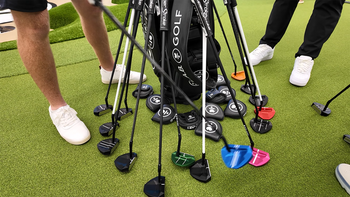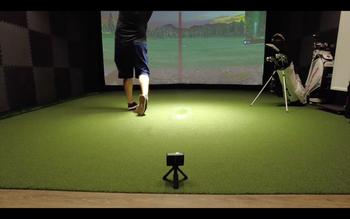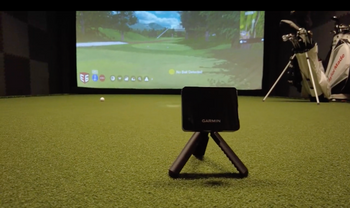Golf is a game of precision, and every component of your equipment plays a crucial role in your performance. Among these, iron shafts are particularly significant, acting as the engine of your golf clubs. The right shaft can dramatically improve your distance, accuracy, and consistency, while the wrong one can hinder your progress and enjoyment of the game. In this comprehensive guide, we'll explore the world of golf iron shafts, helping you understand the key factors in selecting the perfect shafts for your game and highlighting some of the best options available.
Table of Contents
Understanding Golf Iron Shafts

Golf iron shafts are the backbone of your clubs, connecting the grip to the clubhead. They play a vital role in determining how your club performs during a swing. The right shaft can help you achieve optimal ball flight, increase distance, and improve accuracy. Conversely, an ill-fitted shaft can lead to inconsistent shots, reduced distance, and overall poor performance.
The Impact of Shafts on Performance
Iron shafts affect three primary aspects of your golf game:
- Distance: The right shaft can help you maximize your swing speed, resulting in greater distance.
- Accuracy: A well-matched shaft can improve your consistency, leading to more accurate shots.
- Trajectory: Shafts influence the launch angle and spin rate of your shots, affecting the overall ball flight.
Types of Golf Iron Shafts
There are two main types of golf iron shafts: steel and graphite. Each has its own characteristics and is suited to different types of players.
Steel Shafts
Steel shafts are the traditional choice for iron clubs and remain popular among many golfers today.
Characteristics:
- Heavier than graphite shafts
- More durable and long-lasting
- Provide better feedback on mishits
- Generally less expensive than graphite
Ideal player profile: Steel shafts are best suited for golfers with faster swing speeds who prioritize control and consistency. They're often preferred by low-handicap players and professionals.
Example models:
- True Temper Dynamic Gold
- KBS C-Taper
- Project X
Graphite Shafts
Graphite shafts have gained popularity in recent years, especially among amateur golfers and seniors.
Characteristics:
Significantly lighter than steel shafts
More flexible, allowing for easier swing speed generation
Better at absorbing vibrations, reducing strain on joints
Generally more expensive than steel
Ideal player profile: Graphite shafts are ideal for golfers with slower swing speeds, seniors, or players looking to increase their distance. They're also beneficial for those with joint issues due to their vibration-dampening properties.
Example models:
Mitsubishi MMT Taper
AeroTech SteelFiber
Fujikura Ventus
Key Factors to Consider When Choosing Iron Shafts
Selecting the right iron shafts involves considering several crucial factors:
Material: Steel vs. Graphite - The choice between steel and graphite largely depends on your swing characteristics and personal preferences.
Steel Pros:
Provides more control and consistency
Offers better feedback on mishits
More durable and cost-effective
Steel Cons:
Heavier, which can be challenging for slower swingers
Transmits more vibration to the hands and arms
Graphite Pros:
Lighter weight allows for increased swing speed
Helps reduce vibration and strain on joints
Offers a wider range of weight options
Graphite Cons:
Generally more expensive than steel
May provide less feedback on mishits
Can be less durable than steel
Weight - Shaft weight plays a crucial role in determining the overall feel and performance of your irons.
Lightweight shafts (< 100g): Ideal for slower swingers or seniors looking to increase clubhead speed and distance.
Mid-weight shafts (100-120g): Suitable for a wide range of players, offering a balance of speed and control.
Heavyweight shafts (> 120g): Best for advanced players with faster swings who prioritize control and workability.
Flex - Shaft flex refers to how much the shaft bends during the swing. Choosing the right flex is crucial for optimizing your performance.
Extra Stiff (X): For very fast swingers (110+ mph) who need maximum control.
Stiff (S): Suited for strong players with swing speeds between 90-110 mph.
Regular (R): Ideal for average players with swing speeds between 80-95 mph.
Senior (A): Designed for players with slower swing speeds, typically between 70-85 mph.
Ladies (L): For the slowest swing speeds, usually below 70 mph.
Launch Profile - Different shafts can affect the launch angle and spin rate of your shots:
- High-launch shafts: Help players who struggle to get the ball airborne or need more carry distance.
- Mid-launch shafts: Offer a balanced trajectory suitable for most players.
- Low-launch shafts: Designed for players who tend to hit the ball too high or need to reduce spin.
Swing Speed - Your swing speed is a critical factor in determining the right shaft for your game. Generally:
Faster swing speeds (90+ mph) benefit from heavier, stiffer shafts.
Moderate swing speeds (80-90 mph) typically work well with regular flex, mid-weight shafts.
Slower swing speeds (< 80 mph) often perform better with lighter, more flexible shafts.
Best Golf Iron Shafts
AeroTech SteelFiber Iron Shafts
AeroTech SteelFiber shafts represent a groundbreaking innovation in golf club technology, combining the best attributes of both graphite and steel shafts. These unique shafts feature a core of filament-wound carbon fiber surrounded by an outer layer of ultra-thin steel fibers, creating a hybrid design that offers players the power of graphite with the stability of steel.
The manufacturing process of SteelFiber shafts is highly sophisticated. The steel fiber material is produced through a bundle drawing process that reduces stainless steel wire to an incredibly thin diameter - each steel filament is approximately 1/10th the diameter of a human hair. Thousands of these filaments are then combined and spun onto spools before being wrapped around the graphite core.
This innovative construction provides several key benefits. The lightweight properties of the graphite core help increase clubhead speed and promote greater distance, while the steel fiber outer layer enhances stability and control. The result is a shaft that offers improved performance across various metrics, including distance, accuracy, and consistency.
One of the standout features of SteelFiber shafts is their superior hoop strength compared to traditional steel shafts, providing better stability throughout the swing. Additionally, the perimeter weighting created by the steel fiber layer increases the shaft's moment of inertia, adding forgiveness to each shot.
SteelFiber shafts have gained popularity among both professional and amateur golfers. They've achieved numerous wins on professional tours, establishing themselves as a trusted option for high-level players. For amateurs, these shafts offer an excellent transition option from steel to graphite, providing familiar feel with enhanced performance characteristics.
Available in various weights and flexes, SteelFiber shafts cater to a wide range of golfers, from those with slower swing speeds seeking more distance to stronger players looking for optimal control and consistency.
AeroTech SteelFiber Iron Shafts
AeroTech SteelFiber Iron Shafts revolutionize control and feel with unmatched graphite-steel hybrid technology.
Fujikura Axiom Iron Shafts
The Fujikura Axiom is a cutting-edge graphite iron shaft that represents a significant advancement in golf equipment technology. Introduced by Fujikura, a renowned name in golf shaft manufacturing, the Axiom brings the company's proprietary VeloCore Technology to iron shafts for the first time. This technology, previously successful in the Ventus line of wood shafts, has been adapted to meet the unique demands of iron play.
The Axiom is designed to deliver exceptional consistency, stability, and workability, addressing the needs of skilled players who seek graphite shaft performance without compromising control. It features a unique 3-parallel system, with specific designs for long irons (#2-#4), mid irons (#5-#7), and short irons (#8-W). This innovative approach allows for optimized performance throughout the set, with each section tailored to the specific requirements of different iron types.
Available in three weight classes - 75g, 105g, and 125g - the Axiom caters to a wide range of player profiles. The 75g option offers a lightweight solution without sacrificing stability, while the heavier options provide tour-level performance for stronger players. Each weight class comes in multiple flexes, allowing for precise fitting to individual swing characteristics.
The Axiom's performance is characterized by its ability to deliver consistent launch conditions, tight dispersion, and enhanced ball speed. It's particularly noted for its low-to-mid launch and spin profile, offering players greater control over their ball flight. The shaft's design also incorporates vibration-reducing properties, enhancing feel without compromising feedback.
Fujikura's Axiom represents a significant step in bridging the gap between steel and graphite iron shafts, offering a high-performance option for players across various skill levels.
Fujikura Axiom Iron Shafts
Fujikura Axiom Iron Shafts deliver explosive consistency and feel for the modern iron game.
Mitsubishi MMT Iron Shafts
The Mitsubishi MMT (Metal Mesh Technology) is an innovative golf iron shaft that combines the benefits of composite materials and steel. Developed by Mitsubishi Chemical (MCA), a company with over 30 years of experience in composite shaft manufacturing, the MMT represents a significant advancement in golf equipment technology.
The key feature of the MMT shaft is its unique construction. It begins with layers of prepreg (resin-reinforced fabric pre-impregnated with carbon fibers) stacked to form the shaft's core. What sets it apart is the integration of a small section of Metal Mesh towards the tip of the shaft. This Metal Mesh is made up of individually braided strands of 304 Stainless Steel.
The incorporation of the Metal Mesh serves multiple purposes. It improves the density and stability of the shaft, similar to what you'd expect from an all-steel shaft. At the same time, it allows for a thinner overall composite wall construction. This combination results in a finely tuned, highly responsive shaft that still provides the consistent launch and spin control necessary for effective iron play.
The MMT shafts are available in both parallel tip and taper tip versions, catering to different player preferences and fitting requirements. They offer a mid-launch and mid-spin profile, making them suitable for a wide range of golfers.
Visually, the MMT shafts feature a sleek matte black finish with subtle, understated graphics. The design includes a stacked 'MMT' logo and 'TYPE-304SS' text that becomes visible in certain lighting conditions.
Overall, the Mitsubishi MMT represents a significant step forward in iron shaft technology, offering golfers the stability of steel combined with the responsiveness and feel of composite materials.
Mitsubishi MMT Iron Shafts
Mitsubishi MMT Iron Shafts redefine stability and precision with Metal Mesh Technology innovation.
Mitsubishi MMT Taper Iron Shafts
The Mitsubishi MMT Taper is an innovative golf iron shaft that combines the benefits of graphite and steel to deliver exceptional performance. Developed by Mitsubishi Chemical, a leader in golf shaft technology for over 30 years, the MMT Taper utilizes a patent-pending Metal Mesh Technology (MMT) to redefine the possibilities for feel and performance in composite iron shafts.
The key feature of the MMT Taper is the integration of a unique metal mesh made from individually braided strands of 304 Stainless Steel into the shaft's prepreg layers towards the tip. This innovative design improves density and stability while allowing for thinner overall composite wall construction. The result is a finely tuned, highly responsive shaft that provides consistent launch and spin control needed for effective iron play.
Available in various weights ranging from 59g to 125g, the MMT Taper is designed to cater to a wide range of golfers. It offers a mid to mid-low launch and spin profile, making it suitable for players seeking optimal trajectory control. The shaft's stability and responsiveness have been praised by golfers and reviewers alike, noting its ability to provide the benefits of graphite shafts without sacrificing the consistency and feel often associated with steel shafts.
Aesthetically, the MMT Taper features a clean, matte black finish with subtle graphics, allowing it to pair well with most club heads and grips. Its performance characteristics include tight dispersion, consistent ball flights, and repeatable distances, making it an attractive option for golfers looking to improve their iron play.
Mitsubishi MMT Taper Iron Shafts
Mitsubishi MMT Taper Iron Shafts offer elite feel and control with tour-level taper design.
UST Mamiya Recoil Iron Shafts
The UST Mamiya Recoil shafts represent a significant advancement in golf shaft technology, specifically designed to enhance performance through improved energy transfer and feel. Launched by UST Mamiya, a company renowned for its innovation in graphite shaft design, the Recoil series has gained popularity among golfers of all skill levels. The key to the Recoil's success lies in its unique construction, which combines high-performance graphite with the stability typically associated with steel shafts.
One of the standout features of the Recoil shafts is their ability to deliver 67% more energy transfer compared to traditional designs. This is achieved through an optimized spring effect inherent in the shaft walls, allowing for a more efficient transfer of energy from the club to the ball. The tighter tolerances of graphite enable UST Mamiya engineers to fine-tune each shaft's performance characteristics, ensuring that players can achieve their desired ball flight and feel.
The Recoil series caters to a wide range of golfers, from high handicappers seeking increased distance and accuracy to low handicap players looking for enhanced control and consistency in their long irons. With various models available, including options tailored for different swing speeds and preferences, the Recoil shafts have effectively broken the stigma surrounding graphite iron shafts. They offer a compelling alternative to traditional steel shafts, making them an attractive choice for golfers looking to optimize their performance on the course.
UST Mamiya Recoil Iron Shafts
UST Mamiya Recoil Iron Shafts maximize energy transfer for superior distance and pinpoint accuracy.
True Temper Dynamic Gold Tour Issue Iron Shafts
The True Temper Dynamic Gold Tour Issue is a premier steel iron shaft designed specifically for professional golfers and serious amateurs seeking the highest level of performance. Known for its exceptional consistency, this shaft maintains the same low launch and low spin characteristics as the standard Dynamic Gold model but is produced with tighter weight tolerances of ±0.5 grams. This precision ensures that every shaft in a set performs uniformly, which is crucial for players who demand exacting standards in their equipment.
Weighing 130 grams for the X100 flex and 132 grams for the S400 flex, the Dynamic Gold Tour Issue is crafted to promote a penetrating ball flight that enhances control and accuracy. The shaft's construction allows it to withstand the rigors of frequent use while delivering a reliable performance that many top players trust. It has become a staple on professional tours, favored by elite golfers such as Brooks Koepka, Justin Thomas, and Scottie Scheffler.
The design of the Tour Issue shafts incorporates advanced engineering techniques to optimize performance. Players benefit from enhanced feedback during swings, which helps them fine-tune their shots. The Dynamic Gold Tour Issue has earned its reputation as the "gold standard" in golf shafts due to its durability, precision, and ability to cater to the needs of fast-swinging players who require a stable and responsive shaft for their irons. This combination of features makes it an ideal choice for those looking to elevate their game through superior equipment.
True Temper Dynamic Gold Tour Issue Iron Shafts
True Temper Dynamic Gold Tour Issue Iron Shafts are the ultimate choice for elite ball strikers.
Nippon Modus3 Tour 120 Iron Shafts
The Nippon Modus3 Tour 120 is a premium steel golf shaft designed to deliver exceptional performance through a combination of advanced engineering and high-quality materials. Crafted with precision in Japan, this shaft has gained widespread popularity among professional and amateur golfers alike due to its ability to balance control, comfort, and consistency.
One of the standout features of the Modus3 Tour 120 is its unique structural design. It incorporates a stiff tip section, a softer mid-section, and a low-rigidity butt section. This configuration ensures a strong trajectory with minimized unwanted spin, making it ideal for players seeking penetrating ball flights. The stiff tip enhances stability at impact, contributing to better accuracy and tighter shot dispersion. Meanwhile, the softer mid-section improves shaft flex control, allowing golfers with varying swing tempos to achieve consistent results. The low butt rigidity adds comfort and promotes a smoother swing tempo, enhancing overall playability.
The Modus3 Tour 120 is engineered using high-grade Japanese steel and undergoes meticulous heat treatment processes to ensure durability and precise performance. Its mid-low launch profile caters to players who prefer a controlled trajectory without sacrificing distance. Additionally, the shaft's low spin characteristics make it an excellent choice for lower-handicap players or those seeking more workability in their iron shots.
Available in multiple flex options (Regular, Stiff, X-Stiff, and TX), the Modus3 Tour 120 caters to a wide range of swing speeds and player preferences. Its traditional smooth bending profile further solidifies its reputation as a tour-preferred shaft that delivers reliable performance across all levels of play.
Nippon Modus3 Tour 120 Iron Shafts
Nippon Modus3 Tour 120 Iron Shafts combine tour-level control with buttery-smooth feel.
Nippon Modus3 Tour 105 Iron Shafts
The Nippon Modus3 Tour 105 is a highly regarded golf iron shaft that has gained significant popularity among both professional and amateur golfers. Originally introduced to the tour as the N.S. PRO MODUS3 PROTO ST in 2010, it quickly gained traction and became the second most popular MODUS3 iron shaft on tour, trailing only behind the N.S. PRO MODUS3 Tour 120.
This shaft is designed to offer a lighter weight option while maintaining the performance characteristics that Nippon shafts are known for. The Tour 105 weighs approximately 105 grams, striking a balance between the heavier Tour 120 and lighter options in the Nippon lineup. This weight reduction aims to increase clubhead speed, potentially leading to longer distances and improved overall performance.
The Modus3 Tour 105 features a traditional, smooth bend profile that contributes to its exceptional feel and consistency. It is engineered to provide a mid-spin and mid-flight ball trajectory, making it versatile for a wide range of golfers. The shaft's design incorporates three sections of custom rigidity: a stiffer tip section for stable trajectory, and mid and butt sections with lower rigidity to enhance control, swing tempo, and feel.
Nippon's reputation for precise manufacturing is evident in the Tour 105. The company applies a uniform quality control process, ensuring minimal tolerance in meeting specifications. This attention to detail extends from tube production to tapering, heat treatment, plating, and testing.
Available in various flexes including Regular, Stiff, and Extra Stiff, the Modus3 Tour 105 caters to different swing speeds and preferences. Its popularity on tour and among amateur players is a testament to its performance, feel, and consistency, making it a top choice for golfers seeking a lighter weight shaft without compromising on quality.
Nippon Modus3 Tour 105 Iron Shafts
Nippon Modus3 Tour 105 Iron Shafts strike the perfect balance of stability, speed, and feel.
Project X Iron Shaft Iron Shafts
The Project X iron shaft, developed by Kim Braly in the early 2000s and now part of True Temper's portfolio, is a revolutionary design that has become a staple on professional golf tours worldwide. Known for its unique stepless construction, the Project X shaft eliminates the traditional "steps" found in other shafts, resulting in a smooth, consistent flex profile. This design enhances energy transfer during the swing, providing players with exceptional control over trajectory and spin.
Project X shafts are renowned for their low-launch, low-spin characteristics, making them an ideal choice for stronger players with faster swing speeds who desire a flat, penetrating ball flight. The stiffness of the shaft is consistent throughout its length, offering unmatched stability and a "stout" feel that appeals to aggressive swingers. The stiffness levels are denoted by a patented numbering system (e.g., 5.0, 5.5, 6.0), which corresponds to increasing levels of rigidity.
Over time, the Project X line has expanded to include variations like the LS (Low Spin) and LZ (Loading Zone) models. The LS model further enhances the low-spin profile with a softer grip section and stiffer tip, catering to athletic players with aggressive transitions. Meanwhile, the LZ model incorporates Loading Zone Technology for improved energy transfer and increased distance while maintaining control.
Tour-validated by elite players such as Rory McIlroy and Jon Rahm, Project X shafts are celebrated for their precision and consistency. With options tailored to different playing styles and preferences, they remain a top choice for golfers seeking performance-driven iron shafts.
Project X Iron Shaft Iron Shafts
Project X Iron Shafts deliver unparalleled accuracy and penetrating flight for aggressive players.
True Temper Dynamic Gold Iron Shafts
The True Temper Dynamic Gold is an iconic golf shaft that has dominated the industry for decades. Its origins can be traced back to 1940 when True Temper first developed the Dynamic line of shafts. These shafts represented a significant advancement over the hickory wooden shafts used in the mid-1920s, offering a range of flexes and a step-down pattern that enhanced feel and reduced twisting.
In 1980, True Temper rebranded the Dynamic shaft as Dynamic Gold, introducing tighter weight tolerances and creating the now-familiar R300, S300, S400, and X100 flex designations. The Dynamic Gold quickly became the preferred choice for professional golfers, including legends like Tiger Woods, and has maintained its status as the number one iron and wedge shaft on the PGA Tour.
The shaft's success stems from its exceptional performance characteristics. It offers a low launch and low spin profile, making it suitable for players with moderate to quick swing tempos. The Dynamic Gold is known for its stability, consistency, and ability to provide a penetrating ball flight with optimal control and accuracy.
Over the years, True Temper has expanded the Dynamic Gold line to include lighter versions weighing 95, 105, and 120 grams, catering to a broader range of players and modern club designs. Despite these variations, the core design of the original Dynamic shaft has remained largely unchanged, testament to its enduring quality and effectiveness.
The Dynamic Gold's popularity among tour professionals and serious amateurs alike is a testament to its reliability, performance, and ability to withstand the test of time in an ever-evolving golf equipment landscape.
True Temper Dynamic Gold Iron Shafts
True Temper Dynamic Gold Iron Shafts set the standard for performance, feel, and reliability worldwide.
How to Choose the Right Shaft for Your Game
Selecting the perfect iron shafts involves more than just reading reviews or following trends. Here's a step-by-step approach to finding your ideal shafts:
- Assess your current game: Understand your swing speed, typical ball flight, and areas for improvement.
- Consult with a professional: Schedule a fitting session with a certified club fitter who can analyze your swing and recommend suitable options.
- Test different options: Try various shaft materials, weights, and flexes to see how they affect your performance.
- Use launch monitor data: Leverage technology to compare key metrics like ball speed, launch angle, and spin rate across different shafts.
- Consider your physical condition: Factor in any physical limitations or injuries that might influence your shaft choice.
- Think long-term: Choose shafts that not only suit your current game but also allow room for improvement.
Expert Tips for Maximizing Performance with Your Iron Shafts
To get the most out of your new iron shafts:
- Regular equipment checks: As your swing evolves over time, periodically reassess your equipment to ensure it still suits your game.
- Combine with proper clubheads: Pair your shafts with clubheads that complement their characteristics for optimal performance.
- Consistent swing tempo: Work on maintaining a consistent swing tempo to fully benefit from your fitted shafts.
- Proper maintenance: Keep your shafts clean and inspect them regularly for any signs of wear or damage.
- Adapt your technique: Be prepared to make minor adjustments to your swing to fully capitalize on your new shafts' properties.
Frequently Asked Questions
What is the difference between steel and graphite iron shafts?
Steel shafts are generally heavier and provide better feedback, making them a popular choice for players with faster swing speeds who prioritize control and consistency. Graphite shafts, on the other hand, are lighter and more flexible, which can help slower swingers generate more speed and distance. They also absorb vibrations better, making them a good option for players with joint issues.
How do I know which shaft flex is right for me?
Shaft flex is determined by your swing speed and style. Players with faster swing speeds typically benefit from stiffer shafts (extra stiff or stiff), while those with slower swing speeds may find regular or senior flex more suitable. A professional fitting session can provide precise recommendations based on your individual swing characteristics.
Can I use different shaft types in my irons?
While it is technically possible to mix shaft types within your set of irons, it is generally not recommended. Consistency in shaft type and flex across your irons helps maintain uniformity in performance and feel, leading to better results on the course. If you have specific needs for different clubs, consult a professional fitter for tailored advice.
How often should I replace my iron shafts?
The lifespan of iron shafts can vary based on usage, care, and material. Generally, steel shafts can last several years if properly maintained, while graphite shafts may wear out more quickly due to their lighter construction. If you notice a decline in performance or visible signs of wear, such as dents or cracks, it may be time to consider replacing them.
Is it worth getting a professional fitting for my iron shafts?
Yes, investing in a professional fitting can significantly enhance your performance. A fitter will analyze your swing characteristics and recommend the best shaft type, weight, and flex tailored to your game. This personalized approach can lead to improved accuracy, distance, and overall enjoyment of the game.
Conclusion
Choosing the right golf iron shafts is a crucial step in optimizing your performance on the course. By understanding the key factors that influence shaft selection and considering your individual needs, you can make an informed decision that will positively impact your game. Remember, while this guide provides a comprehensive overview, nothing beats the value of a professional fitting session tailored to your unique swing characteristics.
Investing time and effort in selecting the perfect iron shafts can lead to improved consistency, increased distance, and ultimately, lower scores. Whether you opt for the stability of steel or the lightweight properties of graphite, the right shafts will help you unlock your full potential on the golf course. So take the time to explore your options, test different shafts, and find the perfect match for your game. Your future self, standing over a well-struck approach shot landing softly on the green, will thank you for it.























